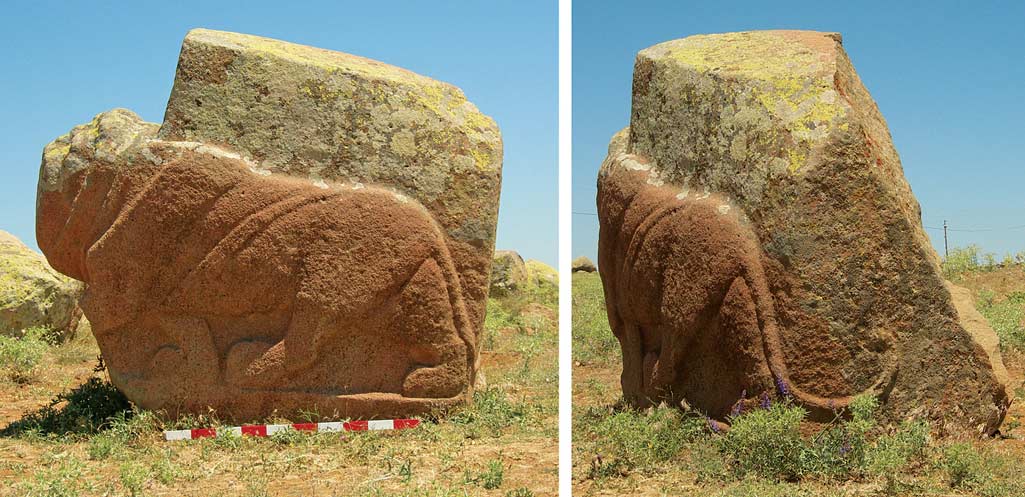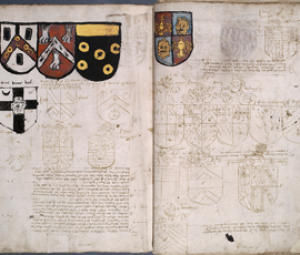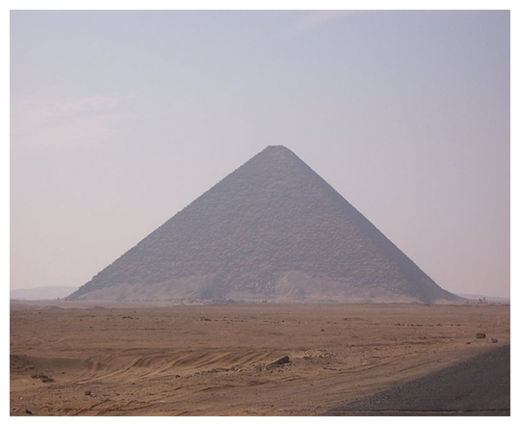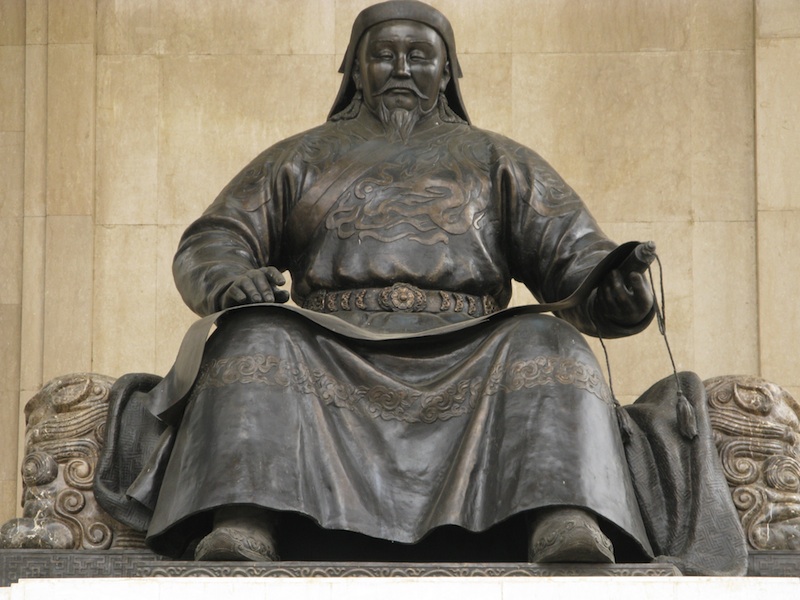
© American Journal of ArchaeologyA life-size granite lion sculpture discovered in the town of Karakiz in Turkey. Dating back more than 3,200 years, to the time of the Hittite Empire, the lion is shown "prowling forward" with rippling muscles and a curved tail. In antiquity there would have been a second lion connected to it, bringing the total weight of the sculpture to about 5 tons (10,000 pounds).
Two sculptures of life-size lions, each weighing about 5 tons in antiquity, have been discovered in what is now Turkey, with archaeologists perplexed over what the granite cats were used for.
One idea is that the statues, created between 1400 and 1200 B.C., were meant to be part of a monument for a sacred water spring, the researchers said.
The lifelike lions were created by the Hittites who controlled a vast empire in the region at a time when
the Asiatic lion roamed the foothills of Turkey.
"The lions are prowling forward, their heads slightly lowered; the tops of their heads are barely higher than the napes," write Geoffrey Summers, of the Middle East Technical University, and researcher Erol Özen in an
article published in the most recent edition of the
American Journal of Archaeology.The
two lion sculptures have stylistic differences and were made by different sculptors. The lion sculpture found in the village of Karakiz is particularly lifelike, with rippling muscles and a tail that curves around the back of the granite boulder.
"The sculptors certainly knew what lions looked like," Summers told LiveScience in an interview. He said that both archaeological and ancient written records indicate that the Asiatic lion, now extinct in Turkey, was still very much around, some even being kept by the Hittites in pits.
Curiously the sculpture at Karakiz has an orange color caused by the oxidization of minerals in the stone. Summers said that he doesn't believe it had this color when it was first carved.





Comment: Very interesting... it makes us wonder whether other so-called "tombs" were in fact meant for counting down the days the until the return of the "sky gods"...